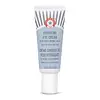What's inside
What's inside
 Key Ingredients
Key Ingredients

 Benefits
Benefits

 Concerns
Concerns

No concerns
 Ingredients Side-by-side
Ingredients Side-by-side

Water
Skin ConditioningCaprylic/Capric Triglyceride
MaskingGlycerin
HumectantButylene Glycol
HumectantPentaerythrityl Distearate
EmulsifyingShea Butter Ethyl Esters
EmollientCetearyl Olivate
Phenoxyethanol
PreservativeBenzyl Alcohol
PerfumingSorbitan Olivate
EmulsifyingAcrylates/C10-30 Alkyl Acrylate Crosspolymer
Emulsion StabilisingSodium Hydroxide
BufferingSodium Hyaluronate
HumectantSodium Stearoyl Glutamate
CleansingCopernicia Cerifera Cera
EmollientPropanediol
SolventGlycogen
HumectantSodium Gluconate
Skin ConditioningRetinol
Skin ConditioningPolysorbate 20
EmulsifyingEthylhexylglycerin
Skin ConditioningDehydroacetic Acid
PreservativeCitric Acid
BufferingHelianthus Annuus Seed Oil
Emollient1,2-Hexanediol
Skin ConditioningCaprylyl Glycol
EmollientDisodium Cocoamphodiacetate
CleansingTocopherol
AntioxidantXanthan Gum
EmulsifyingEthyl Ferulate
AntioxidantHumulus Lupulus Extract
AntimicrobialWater, Caprylic/Capric Triglyceride, Glycerin, Butylene Glycol, Pentaerythrityl Distearate, Shea Butter Ethyl Esters, Cetearyl Olivate, Phenoxyethanol, Benzyl Alcohol, Sorbitan Olivate, Acrylates/C10-30 Alkyl Acrylate Crosspolymer, Sodium Hydroxide, Sodium Hyaluronate, Sodium Stearoyl Glutamate, Copernicia Cerifera Cera, Propanediol, Glycogen, Sodium Gluconate, Retinol, Polysorbate 20, Ethylhexylglycerin, Dehydroacetic Acid, Citric Acid, Helianthus Annuus Seed Oil, 1,2-Hexanediol, Caprylyl Glycol, Disodium Cocoamphodiacetate, Tocopherol, Xanthan Gum, Ethyl Ferulate, Humulus Lupulus Extract
Water
Skin ConditioningEthylhexyl Olivate
Skin ConditioningPrunus Armeniaca Kernel Oil
MaskingButylene Glycol
HumectantCetyl Alcohol
EmollientGlycerin
HumectantMangifera Indica Seed Butter
Skin ConditioningSodium Acrylates Crosspolymer-2
AbsorbentCetyl Phosphate
EmulsifyingCaffeine
Skin ConditioningSqualane
EmollientHyaluronic Acid
HumectantPanthenol
Skin ConditioningCucumis Sativus Fruit Extract
EmollientAvena Sativa Bran Extract
AbrasiveAloe Barbadensis Leaf Juice
Skin ConditioningCamellia Sinensis Leaf Extract
AntimicrobialColloidal Oatmeal
AbsorbentChrysanthemum Parthenium Extract
Skin ConditioningGlycyrrhiza Glabra Root Extract
BleachingCitrus Aurantium Dulcis Peel Extract
Emulsion StabilisingCaprylic/Capric Triglyceride
MaskingCaprylyl Glycol
EmollientSodium Phytate
Sodium Polyglutamate
HumectantC20-22 Alkyl Phosphate
Emulsifying1,2-Hexanediol
Skin ConditioningC20-22 Alcohols
Emulsion StabilisingHydroxyacetophenone
AntioxidantPropanediol
SolventPhenoxyethanol
PreservativePotassium Hydroxide
BufferingWater, Ethylhexyl Olivate, Prunus Armeniaca Kernel Oil, Butylene Glycol, Cetyl Alcohol, Glycerin, Mangifera Indica Seed Butter, Sodium Acrylates Crosspolymer-2, Cetyl Phosphate, Caffeine, Squalane, Hyaluronic Acid, Panthenol, Cucumis Sativus Fruit Extract, Avena Sativa Bran Extract, Aloe Barbadensis Leaf Juice, Camellia Sinensis Leaf Extract, Colloidal Oatmeal, Chrysanthemum Parthenium Extract, Glycyrrhiza Glabra Root Extract, Citrus Aurantium Dulcis Peel Extract, Caprylic/Capric Triglyceride, Caprylyl Glycol, Sodium Phytate, Sodium Polyglutamate, C20-22 Alkyl Phosphate, 1,2-Hexanediol, C20-22 Alcohols, Hydroxyacetophenone, Propanediol, Phenoxyethanol, Potassium Hydroxide
 Reviews
Reviews

Ingredients Explained
These ingredients are found in both products.
Ingredients higher up in an ingredient list are typically present in a larger amount.
1,2-Hexanediol is a synthetic liquid and another multi-functional powerhouse.
It is a:
- Humectant, drawing moisture into the skin
- Emollient, helping to soften skin
- Solvent, dispersing and stabilizing formulas
- Preservative booster, enhancing the antimicrobial activity of other preservatives
Butylene Glycol (or BG) is used within cosmetic products for a few different reasons:
Overall, Butylene Glycol is a safe and well-rounded ingredient that works well with other ingredients.
Though this ingredient works well with most skin types, some people with sensitive skin may experience a reaction such as allergic rashes, closed comedones, or itchiness.
Learn more about Butylene GlycolThis ingredient is an emollient, solvent, and texture enhancer. It is considered a skin-softener by helping the skin prevent moisture loss.
It helps thicken a product's formula and makes it easier to spread by dissolving clumping compounds.
Caprylic Triglyceride is made by combining glycerin with coconut oil, forming a clear liquid.
While there is an assumption Caprylic Triglyceride can clog pores due to it being derived from coconut oil, there is no research supporting this.
Learn more about Caprylic/Capric TriglycerideCaprylyl Glycol is a humectant and emollient, meaning it attracts and preserves moisture.
It is a common ingredient in many products, especially those designed to hydrate skin. The primary benefits are retaining moisture, skin softening, and promoting a healthy skin barrier.
Though Caprylyl Glycol is an alcohol derived from fatty acids, it is not the kind that can dry out skin.
This ingredient is also used as a preservative to extend the life of products. It has slight antimicrobial properties.
Learn more about Caprylyl GlycolGlycerin is already naturally found in your skin. It helps moisturize and protect your skin.
A study from 2016 found glycerin to be more effective as a humectant than AHAs and hyaluronic acid.
As a humectant, it helps the skin stay hydrated by pulling moisture to your skin. The low molecular weight of glycerin allows it to pull moisture into the deeper layers of your skin.
Hydrated skin improves your skin barrier; Your skin barrier helps protect against irritants and bacteria.
Glycerin has also been found to have antimicrobial and antiviral properties. Due to these properties, glycerin is often used in wound and burn treatments.
In cosmetics, glycerin is usually derived from plants such as soybean or palm. However, it can also be sourced from animals, such as tallow or animal fat.
This ingredient is organic, colorless, odorless, and non-toxic.
Glycerin is the name for this ingredient in American English. British English uses Glycerol/Glycerine.
Learn more about GlycerinPhenoxyethanol is a preservative that has germicide, antimicrobial, and aromatic properties. Studies show that phenoxyethanol can prevent microbial growth. By itself, it has a scent that is similar to that of a rose.
It's often used in formulations along with Caprylyl Glycol to preserve the shelf life of products.
Propanediol is an all-star ingredient. It softens, hydrates, and smooths the skin.
It’s often used to:
Propanediol is not likely to cause sensitivity and considered safe to use. It is derived from corn or petroleum with a clear color and no scent.
Learn more about PropanediolWater. It's the most common cosmetic ingredient of all. You'll usually see it at the top of ingredient lists, meaning that it makes up the largest part of the product.
So why is it so popular? Water most often acts as a solvent - this means that it helps dissolve other ingredients into the formulation.
You'll also recognize water as that liquid we all need to stay alive. If you see this, drink a glass of water. Stay hydrated!
Learn more about Water